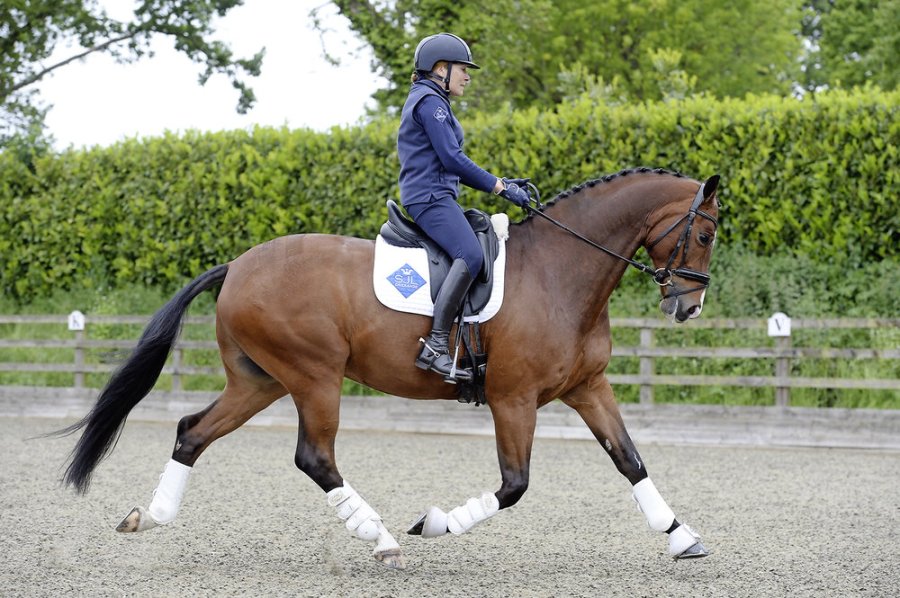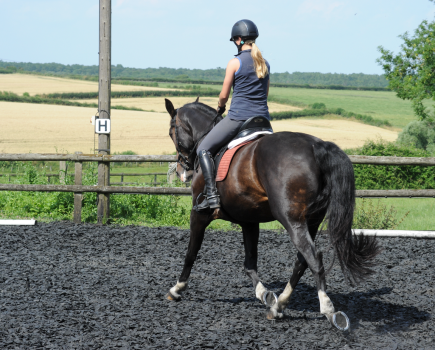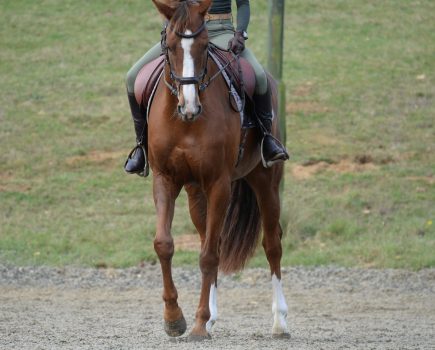Trot is a two-time pace where your horse’s legs move in diagonal pairs, but what should a perfect trot look like? When assessing your horse’s trot, either under saddle, in the field or in-hand, you’re looking for loose, free, active steps and a regular rhythm. Being able to stay in natural balance, showing suppleness over his back – commonly known as swinging – with hindquarters that are engaged (ie his hindlegs reaching under his body) is also important. You want to see if he can vary his trot, as this will be essential if gaining good marks in the dressage arena is your aim, especially as you move through the grades. Don’t panic too much though if
this doesn’t describe your horse right now,
as with correct and regular training this gait can easily be improved.
You’ll first encounter medium trot in Novice tests and Young Horse classes, where you’ll be asked to ‘show some medium trot strides’. At this level the judges are assessing your horse’s potential, even if he’s still not able to hold the trot for long. At Elementary level, you’ll ride the trot from marker to marker as, at this level, your horse should be able to sustain his rhythm and balance across the entire diagonal, showing a correct transition, before and after.
It’s important to remember that medium trot shouldn’t be mistaken for going faster. You need to teach your horse to push and cover the ground by lengthening his strides, not quickening them.
Allow your horse to come up and out to the contact, encouraging him to stay in self-carriage, otherwise he may fall onto his forehand. By keeping his hind legs engaged, into an upwards contact, it teaches him to push up to the bridle, helping him sustain his balance and keep an even rhythm.
Developing your medium trot
Don’t hurry the trot to create the medium strides, but use the same principle of teaching collected trot, just the other way. Push for a few strides, then bring him back on his hind legs again, and then repeat.
You can always help your horse with the whip a little bit, but don’t teach him to run away from it. Use a schooling whip to just ‘touch’ – and I mean touch – him on the quarters to help him engage. Then follow this with a pat as a reward to show him it’s not a negative aid, but a training one. Also, stick to the arena fence when teaching him, as this will help him sustain his balance until he’s ready to tackle a diagonal line.
Don’t miss the latest issue of Your Horse Magazine, jam-packed with training and veterinary advice, horse-care tips and the latest equestrian products available on shop shelves, on sale now.









